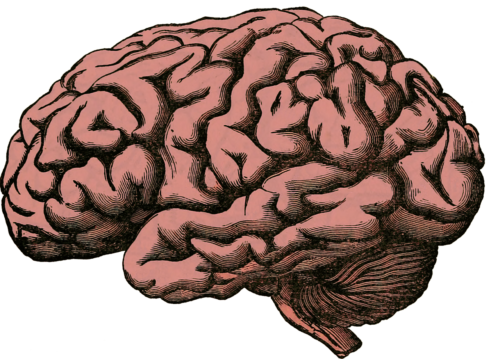The human brain is the central organ of the human nervous system, and with the spinal cord makes up the central nervous system1. It controls most of the activities of the body, processing, integrating, and coordinating the information it receives from the sense organs, and making decisions as to the instructions sent to the rest of the body2.

What is the weight of a human brain?
The average weight of a human brain is about 3 pounds or 1.4 kg23. It is composed of 60% fat, with water, protein, carbohydrates, and salt accounting for the other 40%2. It is not a muscle, but an organ made up of neural tissue2.
Frequently Asked Questions about the human brain:
How many cells are present in the human brain?
The human brain contains an estimated 86 billion neurons, which are specialized nerve cells. These neurons form connections with thousands of other neurons, resulting in trillions of connections within the brain.
What are the primary components of the brain?
The brain consists of three main parts: the cerebrum, cerebellum, and brainstem. The cerebrum is responsible for higher cognitive functions such as thinking, memory, and perception. The cerebellum controls motor coordination and balance. The brainstem regulates vital functions like breathing, heart rate, and consciousness.
How much energy does the brain consume?
Despite accounting for only 2% of a person’s body weight, the brain consumes roughly 20% of the body’s total energy supply. This substantial energy demand is essential to support the brain’s various functions.
Fun Facts about the human brain
- Neurons can communicate with each other at astonishing speeds of up to 120 meters per second (268 miles per hour).
- The human brain isn’t fully developed until approximately the age of 25. The prefrontal cortex, responsible for decision-making and impulse control, is one of the last areas to mature.
- Composed of approximately 75% water, the brain generates around 20 watts of electrical power, equivalent to the energy needed to illuminate a dim light bulb.
- Surprisingly, the brain lacks pain receptors, meaning it doesn’t experience pain during surgical procedures or interventions.
- The brain’s surface features folds and grooves known as sulci and gyri, respectively. These structures increase the brain’s surface area, enabling more processing power within the limited space of the skull.
- The brain exhibits remarkable adaptability and can rewire itself in response to learning, experiences, and even injuries. This ability is referred to as neuroplasticity.
- Certain regions of the brain, such as the hippocampus associated with learning and memory, can generate new neurons through a process called neurogenesis.
The human brain is an awe-inspiring organ, and our understanding of its complexities continues to evolve as research progresses.
Source:
(1) Human brain – Wikipedia. https://en.wikipedia.org/wiki/Human_brain.
(2) The human brain: Parts, function, diagram, and more – Medical News Today. https://www.medicalnewstoday.com/articles/brain.
(3) Brain | Definition, Parts, Functions, & Facts | Britannica. https://www.britannica.com/science/brain.
Leave a Reply Cancel reply